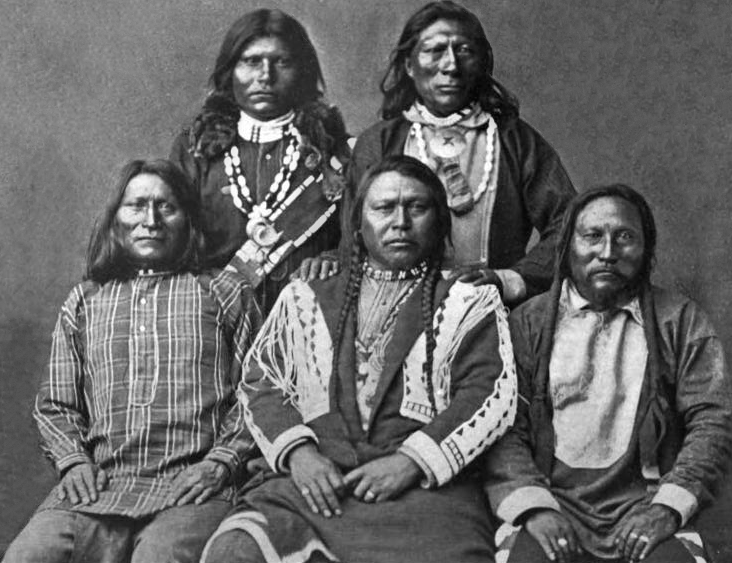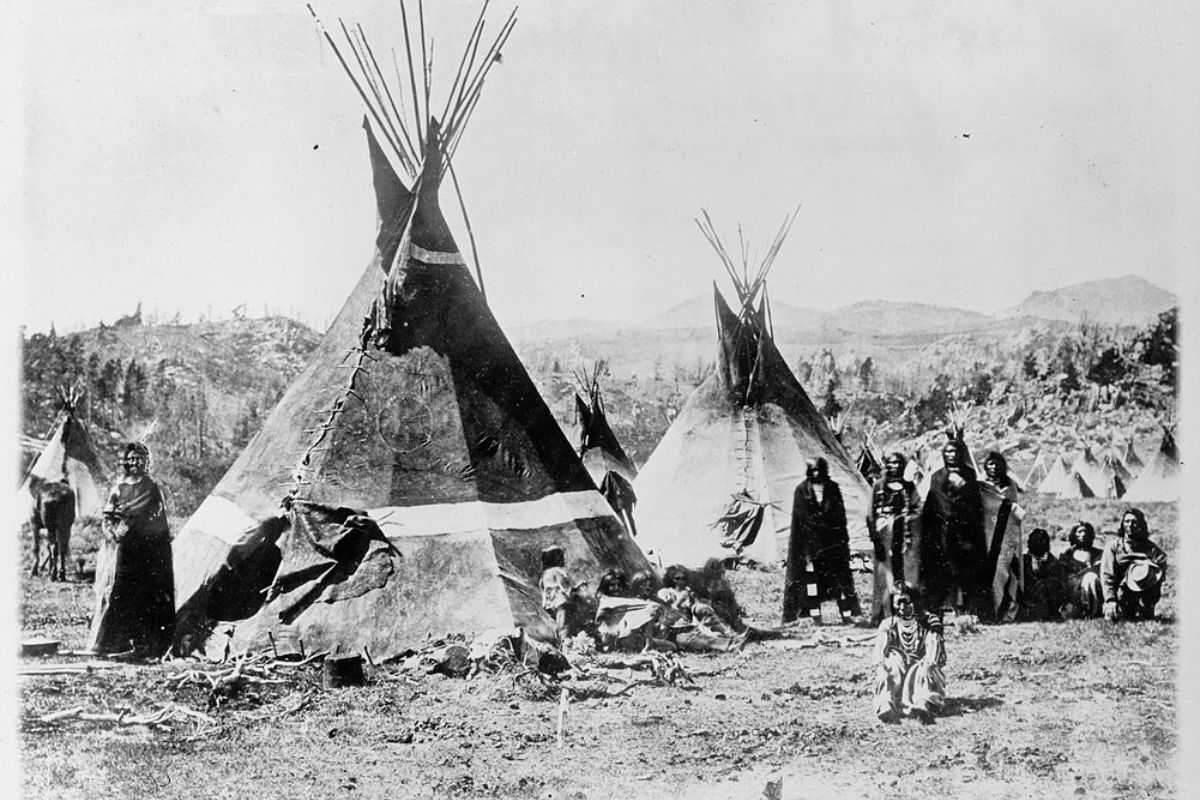The Shoshone Tribe, also known as the Shoshoni or Snake Indians, is a Native American tribe with a rich history and cultural heritage.
Historically occupying parts of the Great Basin, including present-day Nevada, Utah, Idaho, Wyoming, and California, the Shoshone people developed a deep understanding of their environment and relied on hunting, gathering, and later, horse-aided mobility for survival.
The tribe is composed of various bands, each with its distinct identity and leadership. The Shoshone hold a strong spiritual connection to the land, emphasizing the importance of harmony with nature.
Despite the challenges of European colonization and westward expansion, the Shoshone Tribe actively works to preserve their cultural heritage and secure their rights, engaging in tribal sovereignty movements and cultural revitalization efforts.
Today, they continue to thrive as a resilient community, advocating for their people’s well-being and maintaining their presence in their ancestral lands.
Shoshone Tribe Facts
1. The Shoshone Tribe historically occupied parts of the Great Basin, including present-day Nevada, Utah, Idaho, Wyoming, and California
The Shoshone Tribe, also known as the Shoshoni or Snake Indians, is a Native American tribe that historically occupied parts of the Great Basin, including present-day Nevada, Utah, Idaho, Wyoming, and California.
Also Read: Facts About the Sioux Tribe
The Great Basin is a region characterized by vast deserts, mountain ranges, and a scarcity of water. The Shoshone people adapted to this challenging environment and developed unique cultural practices and survival strategies.

2. The Shoshone people have roots that trace back thousands of years
The Shoshone people have a rich and diverse culture with roots that trace back thousands of years. They are believed to be one of the oldest indigenous groups in North America.
Archaeological evidence suggests that the Shoshone have inhabited the Great Basin for at least 10,000 years. Over time, they developed a deep knowledge of the land, its resources, and the seasonal patterns necessary for survival.
3. The Shoshone Tribe is divided into several bands, each with its own distinct identity and leadership
The Shoshone Tribe is divided into several bands, each with its own distinct identity and leadership. Some of the well-known Shoshone bands include:
- Western Shoshone
- Northern Shoshone
- Eastern Shoshone
- Goshute
Each band had its own territory and governing structure, often led by a tribal council or chief. The bands maintained social connections through trade, intermarriage, and shared cultural practices while maintaining their own specific traditions and dialects of the Shoshone language.
Despite the distinctions between the bands, there were also commonalities in language, cultural practices, and shared experiences that bound the Shoshone people together as a larger tribal group.
4. Traditionally, the Shoshone people were hunter-gatherers
Traditionally, the Shoshone people were hunter-gatherers, relying on the abundant natural resources of the Great Basin for their sustenance. They had an intimate understanding of their environment and utilized a variety of hunting, fishing, and gathering techniques.
Hunting game such as deer, elk, and antelope was an important activity for the Shoshone, and they employed tools such as bows and arrows, spears, and traps. Gathering plant foods like wild tubers, seeds, berries, and roots also played a significant role in their diet.
5. The introduction of horses by the Spanish in the 16th century greatly transformed Shoshone culture
The introduction of horses by the Spanish in the 16th century greatly transformed Shoshone culture. Horses revolutionized their hunting techniques and increased their mobility, allowing them to cover larger territories in search of game. The acquisition of horses brought about changes in social structures, as well.
Shoshone society became more mobile, and horse ownership increased one’s prestige within the community. Horses also facilitated trade and communication between different Native American tribes across the Great Plains and the Rocky Mountains.
6. The Shoshone Tribe played a significant role in the Lewis and Clark Expedition of 1804-1806
The Shoshone Tribe played a significant role in the Lewis and Clark Expedition of 1804-1806. When the expedition reached present-day North Dakota, they encountered a Shoshone woman named Sacagawea, who was married to a French-Canadian fur trapper.
Sacagawea joined the expedition as an interpreter and guide, providing invaluable assistance in navigating the unfamiliar terrain and establishing relationships with other Native American tribes along the journey.
Her presence and knowledge of the land were instrumental in the expedition’s success and peaceful interactions with indigenous peoples.
Sacagawea’s role in the Lewis and Clark Expedition has made her an iconic figure in American history, symbolizing the contributions of Native Americans to the exploration of the American West.
7. The Shoshone people have a strong spiritual connection to the land
The Shoshone people have a strong spiritual connection to the land and believe in the importance of maintaining a harmonious relationship with nature.
They have traditional ceremonies, dances, and rituals that are performed to honor their ancestors and seek spiritual guidance. These ceremonies often involve prayers, songs, dances, and the use of sacred objects.
The Shoshone believe that the natural world is filled with spirits and that all living beings are interconnected. They hold deep respect for the land, animals, plants, and waterways, seeing them as integral parts of their identity and existence.
8. European colonization and westward expansion had a profound impact on the Shoshone Tribe
European colonization and westward expansion had a profound impact on the Shoshone Tribe. As settlers arrived in their ancestral lands, conflicts arose over access to resources and control of territory.
The Shoshone experienced forced relocation, loss of hunting grounds, and suppression of their cultural practices and languages. Treaties were signed between the Shoshone and the United States government, but many of these agreements were not honored, resulting in further land loss and displacement.
9. The Shoshone Tribe has faced numerous challenges in preserving their cultural heritage and securing their rights
The Shoshone Tribe has faced numerous challenges in preserving their cultural heritage and securing their rights. However, they have been actively involved in tribal sovereignty movements and have made efforts to revive and celebrate their traditions, languages, and arts.
Cultural revitalization programs have been established to teach younger generations about their heritage, including traditional crafts, storytelling, and language classes.
Shoshone communities have also worked to protect and reclaim sacred sites and artifacts, advocating for the preservation of their cultural legacy.
10. Today, the Shoshone Tribe continues to maintain a presence in their ancestral lands
Today, the Shoshone Tribe continues to maintain a presence in their ancestral lands. They have tribal governments and organizations that work towards promoting their cultural heritage, providing social services, and advocating for the rights and well-being of their people.
These organizations address issues such as education, healthcare, housing, economic development, and natural resource management. The Shoshone are active participants in inter-tribal collaborations, engaging in cultural exchanges and political alliances to protect indigenous rights and promote tribal sovereignty.
Despite the challenges they have faced, the Shoshone Tribe remains resilient and committed to preserving their cultural identity and ensuring a better future for their communities.
